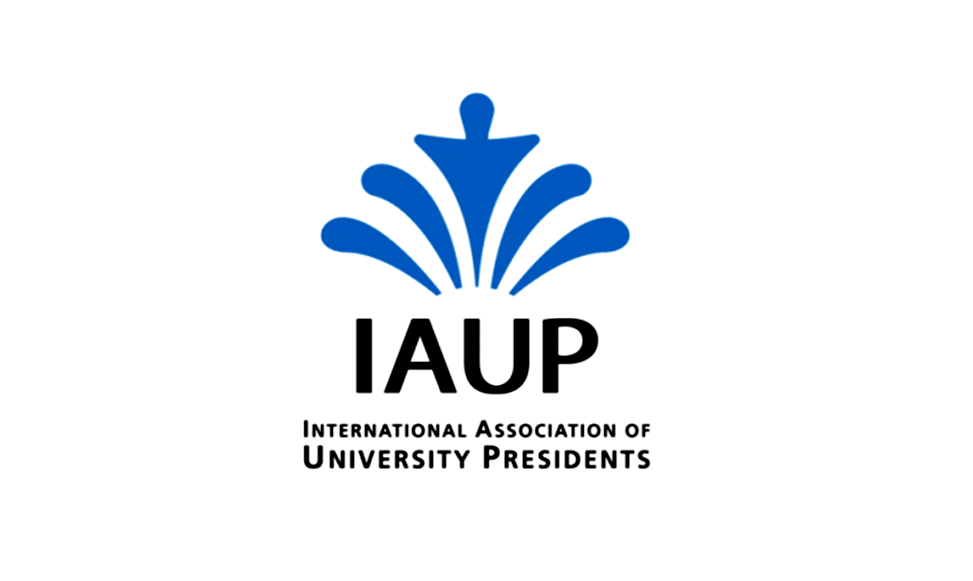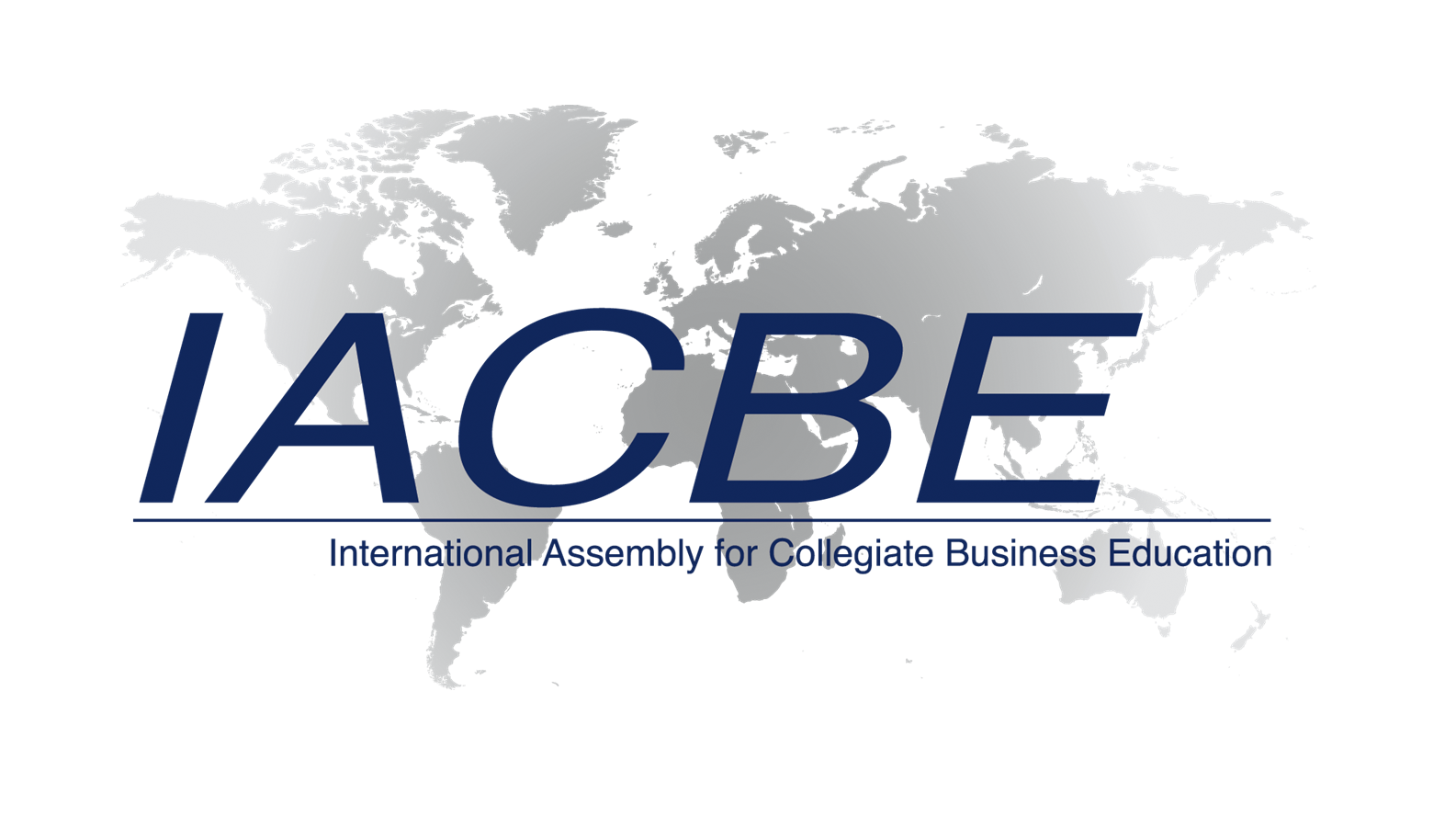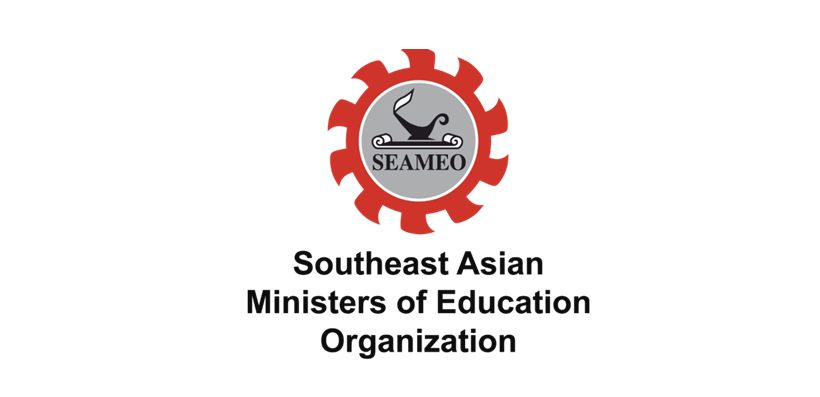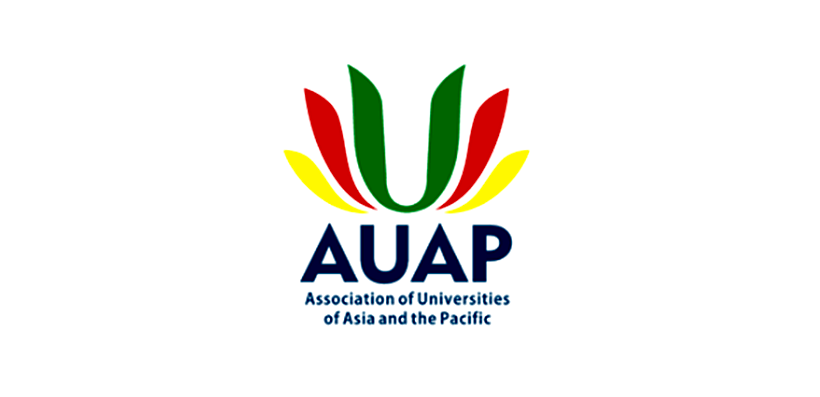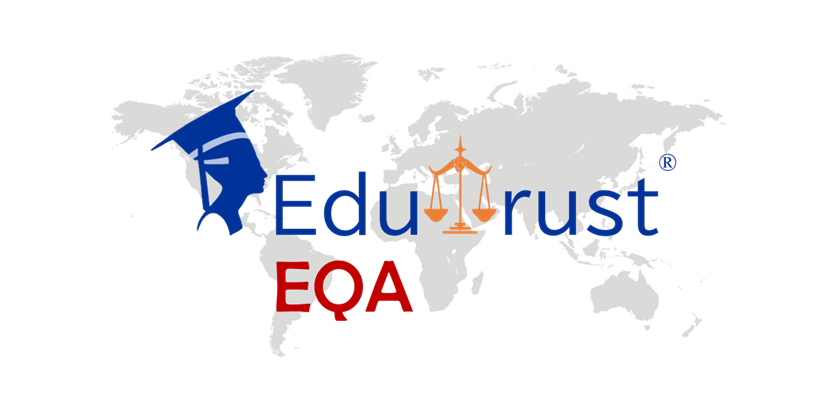Events
On the Importance of International Chinese Education

On the Importance of International Chinese Education
International Chinese language education plays a vital role in promoting cultural exchange and understanding, advancing the internationalization of the Chinese language, enhancing China's soft power, and cultivating intercultural talent. Traditional medicine, traditional music, and rich history, for example, are of great significance and indispensable to the advancement of human development and civilization worldwide. Therefore, we should attach great importance to the development of international Chinese language education, continuously improve teaching quality and standards, and contribute to building a community with a shared future for mankind.
Ed.D. Mika Kin, Chairman of the Supervisory Board at The Asia Pacific School of Business
In the context of deepening globalization, where economic interdependence and cultural exchanges have reached unprecedented levels, International Chinese Education (ICE) has evolved from a marginal academic discipline into a pivotal force shaping cross-border interactions. Unlike the simple language instruction it was once perceived to be, modern ICE serves as a multidimensional bridge connecting China with the world, carrying the dual missions of linguistic communication and cultural inheritance. Statistics from China's Ministry of Education show that by 2025, Chinese has been integrated into the national education systems of 85 countries, with the total number of international learners and users exceeding 200 million—a figure that reflects not only the global "Chinese fever" but also the increasingly prominent strategic value of ICE . Beyond the core significances of promoting cultural exchange, advancing Chinese internationalization, enhancing cultural soft power, and cultivating cross-cultural talents as outlined, ICE embodies unique value in preserving human civilization diversity, complementing the global knowledge system, and facilitating inclusive development. This paper will elaborate on these dimensions, with special emphasis on the irreplaceable contributions of Chinese traditional medicine, traditional music, and profound history to human progress and civilizational advancement.
I. Facilitating Cultural Exchange and Mutual Understanding: Breaking Barriers Between Civilizations
Cultural exchange constitutes the fundamental mission of ICE, as language—being the carrier of culture—determines the depth and authenticity of intercultural understanding. ICE transcends the limitations of translation by enabling learners to engage with Chinese culture through its original linguistic lens, thereby fostering genuine mutual comprehension and dispelling misunderstandings rooted in cultural differences.
1.1 Deepening Mutual Cognition Through Linguistic Immersion
ICE provides international learners with an immersive gateway to China's cultural ecosystem, allowing them to move beyond stereotypes and access the essence of Chinese civilization. The learning process extends far beyond vocabulary and grammar; it involves engaging with classical texts, folk customs, and contemporary social norms. For instance, when studying the ancient poem "Quiet Night Thoughts" by Li Bai, learners do not merely memorize the lines but explore the cultural connotations of "moon" as a symbol of homesickness—a concept that transcends literal translation. Similarly, understanding the etiquette of "offering tea" in Chinese society requires grasping the implicit values of respect and modesty embedded in the language.
China's profound history, spanning over 5,000 years, forms the backbone of this cultural immersion. ICE curricula increasingly integrate historical narratives that highlight China's contributions to human civilization, such as the Four Great Inventions, the governance philosophy of "people-oriented" advocated by ancient scholars, and the inclusive diplomatic concepts embodied in the Silk Road. These historical elements help learners recognize that Chinese civilization has long been characterized by openness and mutual learning. As observed by Tozik, former Vice Prime Minister of Belarus and Director of the Confucius Institute at Belarusian State University, "Confucius Institutes—core platforms of ICE—enable the world to understand a real, comprehensive, and three-dimensional China, while also allowing China to better know the world" . This two-way exchange is evident in programs like the "Young Sinologists Exchange," where scholars from 61 countries engage with Chinese cultural heritage sites, from the Confucian hometown in Nanping to the Terracotta Army in Xi'an, and share their own cultural perspectives in return .
Traditional Chinese music and medicine serve as distinctive cultural ambassadors within this exchange framework. Traditional music, with its unique pentatonic scale and instruments like the guqin (seven-stringed zither) and erhu (two-stringed fiddle), conveys emotions and philosophical concepts that differ from Western tonal systems. ICE courses incorporating guqin music teach learners about the Confucian concept of "harmony between man and nature" reflected in melodies like "Flowing Water," while erhu pieces such as "Moon Over a Fountain" illustrate the integration of poetic imagery and musical expression. In Kenya, the Confucius Institute at the University of Nairobi has organized Chinese folk music performances that blend erhu melodies with local nyatiti rhythms, creating a new form of cross-cultural dialogue . Similarly, traditional Chinese medicine (TCM), with its holistic approach to health, introduces learners to a knowledge system distinct from Western biomedicine. Courses on TCM basics explain concepts like "Yin-Yang balance" and "meridian circulation," challenging the dichotomous thinking of modern medicine and offering alternative perspectives on health and wellness. In many Western countries, TCM-related Chinese vocabulary such as "acupuncture" and "herbal decoction" have entered daily language, a testament to the cultural influence facilitated by ICE.
1.2 Dispelling Cultural Misunderstandings and Reducing Conflicts
Cultural misunderstandings often arise from incomplete or distorted information, and language barriers exacerbate this problem. ICE addresses this by equipping learners with the ability to interpret Chinese discourse in its cultural context, thereby reducing conflicts caused by misinterpretation. For example, the Chinese concept of "modesty"—often expressed through phrases like "I am not proficient"—is frequently misunderstood by Westerners as a lack of confidence. Through ICE instruction, learners come to understand that this linguistic convention reflects the cultural value of humility rather than self-deprecation.
In business contexts, such cultural literacy is particularly crucial. A Western executive who has studied Chinese through ICE will recognize that the phrase "We will consider it" may imply a polite refusal rather than an open possibility, avoiding costly misjudgments in negotiations. The global expansion of Chinese enterprises and the deepening of China's participation in international trade have made this kind of cross-cultural communication competence increasingly valuable. A 2024 survey by the China International Chinese Education Foundation found that 78% of multinational companies operating in China consider proficiency in Chinese and understanding of Chinese culture as key criteria for hiring local employees .
Traditional culture elements play a vital role in resolving cultural conflicts. TCM's emphasis on "preventive treatment" aligns with the global trend of health awareness, while its holistic philosophy resonates with the growing interest in integrative medicine. When international learners study TCM through Chinese, they not only master medical terminology but also absorb the concept of "harmony" that underpins TCM—an idea that promotes tolerance and cooperation in cross-cultural interactions. Similarly, traditional Chinese music, with its focus on melodic continuity and emotional subtlety, helps bridge the gap between individualistic and collectivistic cultural values, fostering a sense of shared humanity.
II. Advancing the Internationalization of Chinese: From a Regional Language to a Global Communication Tool
The internationalization of a language is determined by its political influence, economic utility, and cultural appeal. Against the backdrop of China's rising comprehensive national strength, ICE has become the primary driver of Chinese internationalization, elevating its status in the global linguistic landscape and expanding its application scenarios.
2.1 Enhancing the Global Status of Chinese
A language's international status is measured by its official recognition, educational penetration, and media presence. ICE has significantly advanced Chinese on all these fronts. As of 2025, Chinese is an official language of the United Nations and 12 international organizations, and over one-fourth of countries and regions have incorporated Chinese teaching into their national education systems . In major economies like the United States, Russia, and the United Kingdom, Chinese has been designated as a key foreign language in national curriculum standards, with some countries such as Hungary and Ireland including it in their college entrance examinations .
Confucius Institutes, as the flagship platforms of ICE, have played a pivotal role in this process. Over the past 20 years, 499 Confucius Institutes and 764 Confucius Classrooms have been established in 161 countries and regions, with a cumulative enrollment of over 20 million students . These institutions not only provide standardized Chinese instruction but also promote the recognition of Chinese proficiency certifications like the HSK (Chinese Proficiency Test) in local education systems and enterprises. In Kenya, the Confucius Institute at the University of Nairobi has trained 110 local Chinese language teachers, accounting for 78% of the country's core Chinese teaching workforce—a contribution that has solidified Chinese's position as a key foreign language in Kenya's education system .
The rising status of Chinese is also reflected in its growing presence in global media and digital spaces. Major international news outlets such as the BBC and CNN now offer Chinese-language versions, while social media platforms like TikTok and Instagram host millions of Chinese-learning accounts. The "Global Chinese Learning Platform" launched by the Chinese government has attracted over 16 million users from 190 countries, providing 30,000 online courses and making Chinese accessible anytime and anywhere . This digital penetration, driven by ICE, has transformed Chinese from a "language of the East" to a truly global communication tool.
2.2 Expanding Application Domains and Practical Value
The internationalization of a language is sustainable only if it possesses practical utility. ICE has strategically expanded Chinese's application scenarios by integrating vocational education and specialized training, making it a valuable skill in fields such as business, tourism, medicine, and engineering.
In the economic sphere, "Business Chinese" courses have become a staple of ICE programs. These courses focus on vocabulary and communication skills related to trade, finance, and corporate management, equipping learners to participate in China's economic ecosystem. With China being the largest trading partner of over 120 countries, proficiency in Chinese has become a competitive advantage in the global job market. In Southeast Asia, "Chinese + E-commerce" training programs have gained immense popularity among young people, as cross-border e-commerce platforms like Alibaba and JD.com create a high demand for professionals who can communicate with Chinese suppliers and consumers . A 2025 report by the International Trade Center found that employees proficient in Chinese earn an average of 23% more than their non-Chinese-speaking counterparts in industries with significant China-related business.
The integration of traditional culture into specialized Chinese courses has further expanded its application value. "TCM Chinese" programs, offered by Confucius Institutes in countries like Australia and Germany, train local medical professionals in TCM terminology and communication skills, facilitating the integration of TCM into local healthcare systems. In the tourism sector, "Cultural Tourism Chinese" courses teach learners to introduce Chinese cultural heritage sites—from the Forbidden City to the Longmen Grottoes—using accurate and vivid language, enhancing the experience of Chinese tourists abroad and promoting inbound tourism to China. Traditional music has also found a practical application in ICE, with "Music Chinese" courses preparing students for careers in cross-cultural music production and performance, as the global demand for Chinese folk music collaborations continues to grow.
The "Chinese + Vocational Education" model pioneered by Xiamen University's Confucius Institutes exemplifies this trend. By combining Chinese language instruction with technical training in fields like railway engineering and renewable energy, these programs have trained a large number of professionals for "Belt and Road" projects. In Kenya, for example, Chinese language training has enabled local workers to participate in the Nairobi-Mombasa Railway project, with Kencilia Overy—who learned Chinese through a Confucius Institute program—gaining international attention for driving the presidential train at the railway's opening ceremony . This practical integration has not only advanced Chinese internationalization but also contributed to local economic development.
III. Strengthening China's Cultural Soft Power: Spreading the Value of Harmonious Coexistence
Cultural soft power, as defined by Joseph Nye, refers to a country's ability to influence others through attraction rather than coercion. ICE is a core vehicle for enhancing China's cultural soft power, as it disseminates Chinese values, cultural heritage, and development experiences to the world, shaping a positive international image of China.
3.1 Disseminating Chinese Cultural Values and Philosophical Wisdom
Chinese civilization, with its emphasis on harmony, balance, and mutual respect, offers valuable insights for addressing global challenges such as climate change, conflict, and inequality. ICE serves as a channel for spreading these values by integrating them into language instruction.
The philosophical concepts embedded in Chinese language are central to this dissemination. For example, the character "harmony" appears in numerous everyday phrases, from harmony brings prosperity to harmony without uniformity. Through explaining these phrases, ICE instructors introduce learners to the Chinese philosophy of resolving differences through dialogue and cooperation—a concept that is increasingly relevant in today's divided world. Similarly, the TCM principle of "Yin-Yang balance" teaches learners to view the world as an interconnected system, fostering a holistic perspective on global issues.
Traditional Chinese music and history further amplify the dissemination of these values. The guqin piece "Guangling San," which tells the story of a musician's loyalty and integrity, conveys the moral values of righteousness and courage. Historical narratives about the Silk Road highlight China's tradition of peaceful trade and cultural exchange, countering the narrative of "great power competition" with examples of mutual benefit. In 2025, the World Chinese Conference brought together young sinologists from around the world to discuss the contemporary relevance of Confucian concepts like "benevolence" and "propriety," demonstrating how ICE facilitates the global dialogue on Chinese values .
This value dissemination is not a one-way indoctrination but a two-way dialogue. ICE encourages learners to compare Chinese values with their own cultural traditions, fostering a shared sense of human values. For instance, when discussing the TCM concept of "caring for life," learners from Western countries often draw connections to the Hippocratic Oath, creating a common ground for medical ethics dialogue. This dialogue enhances the international recognition of Chinese values, strengthening China's cultural soft power in a subtle and sustainable way.
3.2 Shaping a Positive National Image and Promoting Opening-Up
A country's image is largely constructed through cultural communication, and ICE plays a crucial role in shaping a realistic and positive image of China. By showcasing China's educational achievements, cultural heritage, and development dynamism, ICE dispels negative stereotypes and promotes international trust.
The high quality of ICE programs itself reflects China's educational advancement. The adoption of advanced educational technologies, such as AI-powered teaching tools, demonstrates China's innovation capacity. The "Global Talk International Chinese Education Agent" launched in 2025, for example, uses digital avatars of 100 Chinese cultural figures and AI technology to provide personalized learning experiences, increasing learning efficiency by over 30% . Such innovations not only improve teaching outcomes but also showcase China's leadership in educational technology, enhancing its image as a modern and innovative nation.
ICE also promotes China's image as an open and inclusive country. The diverse cultural activities organized by Confucius Institutes—such as Chinese New Year celebrations, calligraphy exhibitions, and TCM health workshops—invite local communities to experience Chinese culture firsthand. In Spain, a blogger who learned Chinese through an ICE program gained popularity by creating videos combining Tianjin dialect with Spanish ham, showcasing the humorous and accessible side of Chinese culture . These grassroots interactions build emotional connections between Chinese people and the world, fostering a sense of familiarity and trust.
This positive image has tangible economic and social benefits. A 2025 survey by the China Tourism Academy found that 62% of international tourists who learned basic Chinese before visiting China reported a more satisfying travel experience, and 45% expressed a willingness to visit again. Similarly, the number of international students coming to China has continued to rise, with over 195 countries and regions sending students to China, and degree-seeking students accounting for over 60% . These exchanges not only boost China's education and tourism industries but also promote long-term people-to-people bonds, laying the foundation for deeper international cooperation.
IV. Cultivating Cross-Cultural Talents: Meeting the Demands of Globalized Development
Globalization has created an urgent demand for professionals with cross-cultural communication skills, and ICE has emerged as a key provider of such talents. By combining language proficiency with cultural literacy, ICE cultivates compound talents who can thrive in diverse cultural environments, driving global cooperation and development. As a representative of "Following Sing Tao and Connecting with China," The Asia Pacific School of Business has always been committed to the principle of "Integrating Chinese and Western Cultures and Combining Knowledge with Action." It consistently takes it upon itself to cultivate "business giants with a strong sense of national cultural identity and the roots of the Chinese people." It conducts international business education globally, supplemented by Chinese culture, and continuously explores and practices to promote the "great rejuvenation of the Chinese nation." Internationally, it actively responds to the "Belt and Road" initiative and actively offers courses that are in line with the forefront of the times.
4.1 Enhancing Comprehensive Quality and International Competence
ICE goes beyond language teaching to focus on the development of cross-cultural competence—the ability to communicate effectively and appropriately in different cultural contexts. This competence includes cultural awareness, empathy, and adaptive thinking, all of which are essential for success in the global workplace.
Through role-playing, case studies, and intercultural communication projects, ICE students learn to navigate cultural differences. For example, a business simulation exercise might require students to negotiate a contract between a Chinese company and a Western company, practicing how to adjust communication styles to accommodate different cultural expectations. Students also engage in cross-cultural collaborative projects, such as working with Chinese university students to create a documentary about traditional music, which enhances their teamwork and intercultural problem-solving skills.
Traditional Chinese culture elements in ICE programs further enrich students' comprehensive quality. Studying TCM teaches students to think holistically and adaptively, skills that are valuable in fields like healthcare, psychology, and environmental science. Learning Chinese calligraphy or painting enhances creativity and attention to detail, while understanding Chinese history develops a long-term perspective and critical thinking. A 2024 study by the International Association of Cross-Cultural Communication found that professionals with Chinese language and cultural training score 28% higher on cross-cultural competence assessments than their peers.
4.2 Meeting Diverse Talent Needs in the Global Marketplace
The growing economic and cultural ties between China and the world have created a huge demand for professionals proficient in Chinese and familiar with Chinese culture. ICE programs are increasingly tailored to meet these specific needs, providing targeted training for different industries and sectors.
In the corporate sector, multinational companies are actively recruiting employees with Chinese language skills. A 2025 report by LinkedIn found that job postings requiring Chinese proficiency increased by 41% compared to 2023, with the highest demand in industries such as finance, technology, and manufacturing. Chinese companies operating overseas also need local employees who can communicate with headquarters and understand Chinese business culture. In Africa, for example, Chinese-funded infrastructure projects have created thousands of jobs for local workers with Chinese language training, as seen in the Nairobi-Mombasa Railway project .
International organizations also recognize the value of Chinese-speaking talents. The United Nations, World Bank, and World Health Organization (WHO) have all increased their recruitment of Chinese-proficient staff to facilitate cooperation with China. The WHO, in particular, has a growing need for professionals who understand TCM, as it seeks to integrate traditional medicine into global healthcare systems. ICE programs tailored for international organizations focus on specialized vocabulary related to global governance, public health, and sustainable development, preparing students for careers in international public service.
The education sector is another major employer of ICE graduates. As the demand for Chinese language teachers grows worldwide, ICE programs that combine language instruction with teacher training are producing a steady stream of qualified educators. In developing countries like Kenya and Mozambique, local Chinese language teachers trained through Confucius Institute programs have become the backbone of national Chinese education systems, addressing the shortage of qualified instructors . These teachers not only promote Chinese language learning but also serve as permanent bridges between their home countries and China.
What we are most gratified and proud of is that The Asia Pacific School of Business has been officially included in the National Qualifications Framework (NQF) accreditation and recognition scheme of the People's Republic of China (https://nqf.nvq.net.cn/). All graduates of The Asia Pacific School of Business with Chinese nationality are included in the degree accreditation scheme.
As China implements a dual-system accreditation and recognition scheme of "academic education + vocational education," the NQF, promoted by the State Council, the Ministry of Education, and the Ministry of Human Resources and Social Security under the "Regulations on Accreditation and Recognition of Vocational Education," will explore and implement a dual accreditation model where academic education is accredited by the Chinese Service Center for Scholarly Exchange (CSCSE) and vocational education by the National Qualifications Framework (NQF).
V. Unique Contributions: Traditional Culture as a Driving Force for Human Civilization
Beyond the aforementioned dimensions, ICE carries unique significance in preserving and promoting Chinese traditional culture—particularly traditional medicine, traditional music, and profound history—which make indispensable contributions to human development and civilizational progress. These cultural elements, transmitted through ICE, enrich the global knowledge system and offer solutions to contemporary challenges.
5.1 Traditional Chinese Medicine: A Treasure Trove of Holistic Health Wisdom
TCM represents a unique medical system with a history of over 2,000 years, and ICE serves as a key channel for its global dissemination. Unlike Western medicine, which focuses on treating specific diseases, TCM emphasizes the balance of the human body and its harmony with the environment—a holistic approach that is increasingly valued in global healthcare.
ICE programs on TCM not only teach medical terminology but also convey its underlying philosophy and practical applications. Students learn to recognize herbal medicines, understand acupuncture points, and apply dietary therapy principles. In countries like Germany and the United States, where TCM is gaining legal recognition, these programs prepare students for careers in integrative medicine clinics. The WHO's inclusion of TCM in its International Classification of Diseases (ICD) has further boosted the demand for TCM-related Chinese language training, as healthcare professionals seek to communicate with Chinese TCM experts and access original TCM texts.
TCM's contributions to global health are particularly evident in times of crisis. During the COVID-19 pandemic, TCM treatments were widely used in China and exported to other countries, with clinical studies showing their effectiveness in alleviating symptoms and improving recovery rates. ICE programs that focus on TCM's role in epidemic prevention have helped spread this knowledge globally, providing a valuable alternative to conventional treatments. In addition, TCM's emphasis on preventive health aligns with the global trend of shifting healthcare focus from treatment to prevention, offering cost-effective solutions for healthcare systems worldwide.
The global dissemination of TCM through ICE also promotes the conservation of medicinal plants and traditional knowledge. By teaching students about the sustainable harvesting of herbal medicines and the importance of preserving TCM formulas, ICE contributes to the protection of biodiversity and cultural heritage. This not only benefits human health but also supports sustainable development goals.
5.2 Traditional Chinese Music: A Universal Language of Emotion and Harmony
Traditional Chinese music, with its unique aesthetic and cultural connotations, is a powerful tool for cross-cultural communication. ICE programs that integrate traditional music education help preserve this art form while promoting cultural diversity and emotional connection.
The distinct characteristics of traditional Chinese music—such as its pentatonic scale, monophonic melody, and emphasis on expression—offer a refreshing alternative to Western music, enriching the global musical landscape. ICE students learn to play traditional instruments like the guqin, erhu, and pipa (four-stringed lute), and to understand the cultural stories behind pieces like "The Moon Reflected on the Erquan Spring" and "Ambush from Ten Sides." These pieces convey emotions and narratives that transcend cultural boundaries, allowing learners to connect with Chinese culture on an emotional level.
Traditional Chinese music also serves as a platform for cross-cultural collaboration. International musicians who have learned Chinese through ICE often incorporate Chinese musical elements into their works, creating fusion genres that appeal to global audiences. For example, the collaboration between Chinese erhu player Ma Xiaohui and Western classical musicians has introduced Chinese folk music to prestigious venues like Carnegie Hall, fostering cultural exchange through music. Confucius Institutes around the world organize "Chinese Music Festivals" that bring together local and Chinese musicians, creating opportunities for cultural dialogue and collaboration .
In addition to its cultural value, traditional Chinese music has therapeutic benefits that are increasingly recognized globally. The gentle melodies of the guqin have been shown to reduce stress and anxiety, and ICE programs that combine music education with TCM wellness concepts are gaining popularity in Western countries. This integration of music and health further expands the practical value of traditional Chinese culture and its contribution to human well-being.
5.3 Profound History: A Source of Wisdom for Contemporary Governance and Development
China's 5,000-year history is a rich source of wisdom and experience, and ICE plays a crucial role in making this history accessible to the world. By teaching students about Chinese historical events, figures, and institutions, ICE offers valuable insights for addressing contemporary global challenges.
Chinese history is replete with examples of effective governance, technological innovation, and cultural integration. The governance system of the Tang Dynasty (618-907 AD), which emphasized meritocracy and religious tolerance, offers lessons for modern multicultural societies. The Grand Canal, a UNESCO World Heritage Site built over 2,000 years ago, demonstrates ancient China's engineering prowess and regional integration efforts, providing inspiration for modern infrastructure projects. ICE programs that explore these historical examples help learners understand China's development path and draw lessons for their own countries.
The Silk Road, one of the most important historical trade routes, is a central theme in many ICE curricula. By studying the Silk Road, students learn about the long history of China's engagement with the world through peaceful trade and cultural exchange. This historical perspective helps counter the narrative of "China threat theory" and promotes the understanding of China's foreign policy principles of peaceful coexistence and mutual benefit. As the "Belt and Road" Initiative continues to expand, ICE programs that connect ancient Silk Road history with modern international cooperation are becoming increasingly relevant, fostering support for global development initiatives.
Chinese history also teaches valuable lessons about resilience and adaptation. The country's ability to overcome numerous challenges—from natural disasters to foreign invasions—and maintain its cultural identity offers inspiration for nations facing adversity. ICE programs that highlight these stories of resilience help promote a positive image of China and foster international solidarity.
VI. Conclusion: Embracing the Mission of International Chinese Education for a Shared Future
In an era of profound global changes and growing interdependence, International Chinese Education has emerged as a vital force for promoting cultural exchange, advancing global cooperation, and preserving human civilization diversity. Its significance extends far beyond language instruction: it facilitates mutual understanding between civilizations, elevates the global status of Chinese, strengthens China's cultural soft power, cultivates cross-cultural talents, and disseminates Chinese traditional culture—including TCM, traditional music, and profound history—that offers unique solutions to contemporary global challenges.
The data and examples presented in this paper—from the 200 million global Chinese learners to the successful integration of TCM into international healthcare systems—attest to the growing importance and impact of ICE. Confucius Institutes, AI-powered teaching tools, and "Chinese + Vocational Education" programs have all contributed to making ICE more accessible, effective, and relevant to the needs of the global community. As observed by Beatrice Muganda Yangala, Permanent Secretary of Kenya's Ministry of Education, the expansion of ICE will further strengthen exchanges between Africa and China, contributing to mutual development .
However, ICE also faces challenges, including the need to adapt to diverse learning needs, address cultural misunderstandings, and ensure the sustainability of educational programs. To overcome these challenges, stakeholders must continue to innovate teaching methods, strengthen international cooperation, and integrate traditional culture with modern educational technologies. By doing so, ICE can better fulfill its mission of promoting cross-cultural understanding and contributing to the building of a community with a shared future for mankind.
In conclusion, International Chinese Education is not merely a educational undertaking but a strategic investment in global peace and development. Its role in fostering mutual respect, promoting cultural diversity, and driving inclusive growth makes it indispensable in today's world. As we move forward, we must recognize and embrace the importance of ICE, support its development, and leverage its potential to create a more harmonious and prosperous global community. The dissemination of Chinese language and culture through ICE is not about imposing values but about offering a unique perspective on human civilization—one that emphasizes harmony, balance, and mutual benefit—and contributing to the collective wisdom that will guide humanity toward a better future.


